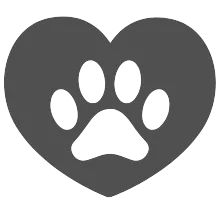Socializing Your Puppy
Properly socializing your puppy is one of the most critical things you can do as a puppy owner!If you’ve read the information about puppy development, you know the importance of having a plan in place to socialize your puppy early.
Some important benchmarks to keep in mind are:
Primary Socialization Window: 8-16 Weeks
First Fear Period: 5 Weeks
Second Fear Period: 8-10 Weeks
Third Fear Period: 6-14 Months

What? Why? How?
What Is Socialization?
Unfortunately, there is a lot of misunderstandings about what socialization is, and how best to do it. Indeed, the subject of is one of the most frequently misunderstood when it comes to best practices when raising a puppy. Many people think it's a numbers game. Exposing the puppy to as many people, places and things as possible. But this approach is not only wrong, it can be downright dangerous!
Webster defines socialization as the “Exposure of a young domestic animal (such as a kitten or puppy) to a variety of people, animals, and situations to minimize fear and aggression and promote friendliness”
(Merriam-Webster, n.d.).
The key word here is "Exposure" which is not the same as "interaction". Many dogs misbehave simply because they are unable to remain emotionally neutral in a stimulating environment. Dogs that are habitually fearful or easily over-excited struggle.
Careful exposure and creating positive associations to new things creates a more confident dog that can handle everyday situations without resorting to undesirable behaviors. Cultivating calm, emotionally neutral responses and shifting their focus back to you as a puppy helps ensure a polite adult dog that will listen to you when it really counts.
Look forward to when your dog is grown and don't let your pup practice behaviors that you don't want later on. For example, if your puppy learns that every time they see a new person they get a lot of excited petting and attention, they may develop unwanted behaviors like jumping and barking at strangers on walks. Ultimately, you want a dog that can move about freely in the world without over-reacting emotionally to outside influences
A few key points to remember are:
Cultivate Neutrality, Calm and Focus on you! They can have fun, run around, explore, be a dog. But teach them to be polite and always return their focus back to you when you call. Interrupt them when they are hyper-focused, barking, lunging at something. or playing too intensely with another dog. Help them settle down for a few seconds before allowing them to re-engage with whatever they were doing before. Reward them liberally for good responses.
Help them gain confidence gradually. Keep exposure time short. and low intensity. Anytime you notice your puppy seems nervous or over excited, move away and help them shift their focus back to you. Teach your puppy to be calm in the presence of distracting stimuli.
Let them take it at their pace. If things aren't going well, call it quits - but don't give up! Just try again later. Expose at a less concerning level. Encourage them with praise and treats, when they choose to investigate.
Safety first! Take your dog out and about as soon as you get them. This is a short time window, there's no time to waste! That said, get them vaccinated on schedule and avoid areas frequented by other dogs until they've had their at least second series of vaccinations. You can still get them out, just keep them above ground with carriers, strollers of simply carrying them.
Don't throw them in the deep end of the pool. Your puppies early interactions with other dogs and people should be low key, carefully managed events. The dog park or a party full of loud, excited strangers isn't a good starting point. Wait until your pup is older and has learned good manners and play skills. Don't overdo it and make sure you are ready to intervene as necessary.
Teach them to accept life's limitations without protest. It's a fact of life, sometimes we have to put up with stuff we don't like. Visits to the vet or the groomer, being crated at home alone at times, these are some of the things your puppy needs to learn to accept. You can help by systematically desensitizing them to being handled and physically restrained. Again, take it slow and give plenty of rewards when checking their ears, teeth, tail and paws.

Why Is It Important?
The plain truth is that behavioral problems are the number one cause of death for dogs under 3 years of age. Not infectious diseases like Parvo or Distemper, as serious as those are. Incomplete or improper socialization often manifests in a higher incidence of fear, anxiety, aggression and other forms of anti-social behavior. This can be difficult to overcome later on, which often results in a significant negative impact on the bond and enjoyment you have with your dog.
“Naturally puppies continue to learn throughout their lives, [but a] puppy who is not socialized early is neurologically fearful and more likely to act cautious, nervous, and shy around unfamiliar people, animals, and situations.”
~ Bonnie V. Beaver, DVM, a board-certified veterinary behaviorist.
Early socialization, done right, helps ensure that normal, everyday happenings such as company coming over, running the vacuum, or doorstep deliveries are not a cause for concern for your dog. which makes for a much happier life together!

How To Go About It?
Timing is key. Mother Nature has her own time windows, so pay attention to the time table at the top of this page! The necessary neural pathways are readily developed during the primary socialization period between 8-16 weeks. This is harder to accomplish later on, especially once intense negative emotional associations and habits have been established. Keep in mind that the second fear period also happens during this time, around 8-10 weeks.
HOW you go about socializing your puppy is as important as WHEN. Keep things neutral and positive ...and short. Exposure does not mean direct interaction, quite the opposite. We want to keep plenty of space between them and the new thing until they gain the confidence to interact more directly. Simple exposure is enough.
Limit interactions with strange people or animals when your dog is very excited or displaying any kind of fear. Puppies are adorable, it's natural to want to show them off and for others to want to hold or pet them. We want to cultivate a calm, relaxed, and low key response to stimuli. Avoid interacting when your pup is barking, jumping, nipping, etc. or when other people or pets are highly stimulated. Keep things short and be alert to when you puppy is over-stimulated.

Socialization Blueprint
Exposure and Rewards
As you begin, allow the puppy to explore and experience new things. Be watchful for signs the puppy is over excited or fearful. If the puppy is fearful either distract them with a reward, such as food or play, or put more space between them and the new thing, then present the reward.
You can reassure your pup in a confident, upbeat way. Be careful not to coddle or baby your puppy! The idea is to help them form positive associations through gradual exposure paired with pleasurable rewards. If your protective attention are too often the reward, your dog will become emotionally dependent on you, which harms more than helps.
Focus
Teach your dog to engage with you and give your their attention even when there's other interesting stuff going on. To start with, keep plenty of distance between your puppy and the interesting things. Redirect their attention with toys food. We want to develop a calm, neutral demeanor while out in public and at home with guests.
Sights, Surfaces and Smells
Here are some things to do with your puppy. Always have a secure leash and collar on your pup.
Let them experience the noise and smells of traffic on a busy street, buses, trucks, trains...whatever your dog might encounter in your community. Use distance and rewards to make it a pleasant experience.
Let your pup walk on a variety of different surfaces and textures. Smooth floors, carpet, gravel, slated bridges and stairs, water drainage grates, grass, wet areas, bubble wrap, inflatable mattress, mulch (don't let them eat it!), sand....you get the idea.
Things that roll, are noisy or have wheels. Skateboards, bicycles, strollers, balls! I find most puppies enjoy riding in a bike basket (provided they are well secured for safety).
Mobility aids like canes, wheelchairs and walkers.
Drones, remote controlled cars, bouncy toys, baby swings and other baby apparatus.
Elevators and escalators, Best to pick your pup up until they get old enough to respond to the leash and have enough coordination to stay on their feet. Stairs can be tackled right away. Start with only a few steps at a time. They will have an easier time going up than going down at first.
Cleaning equipment like vacuums, mops and buckets, garbage cans, leaf blowers.
The list is endless! Choose things that your dog is most likely to encounter.
People and Animals
Sit on a bench and let people and other dogs pass by while you and the puppy remain still and watch. Keep it short, go to quieter areas at first and work up to more crowded areas gradually. Start small, keep don't over-expose your pup.
Make sure to expose your dog to people who are different from you. No kids? Be sure to visit places kids hang out like parks and sport fields. Live alone? Be sure to introduce your pup to other adults of different ages and genders. This is especially important if your dog is a large breed.
Introduce your puppy to different animals large and small. not just other dogs. Cats, rabbits, hamsters, ducks and birds, horses, cows, goats, sheep. Locally, Kelsey Creek Park is a great place for safely visiting farm animals as well as different surfaces to walk on.
Well chosen dog playmates can be great, but avoid the dog park for now. There is too much risk of getting sick or injured or having a bad experience. Better to choose playmates among people you know who have well behaved dogs. dogs close in age are great, but well socialized, calm adult dogs are important, too. Don't allow your puppy to get over-stimulated , play too long or play rudely. 15-20 minutes is plenty, then it's time for a nap!
Sounds
Dogs can be quite sensitive to auditory stimuli, so don't neglect this. Especially if you live in an apartment or busy neighborhood.
You can search the internet for resources for desensitizing dogs to sounds, there are lots of apps and YouTube videos available. Start playing sounds at low volume and gradually turn it up. Monitor your pup to make sure you they aren't getting distressed. This is a good time to practice some simple training and play time, so that your puppy forms good associations with the the sounds. In time they will literally fade into the background of the pups awareness.
We frequently hear pet owners who are concerned about their dog's reaction to fireworks and thunderstorms. Be proactive, don't wait until a week before the 4th of July or the stormy season to try to desensitize your puppy to fireworks and thunderstorms. If your pup tends to be very noise sensitive, make a point of playing those sounds as you are socializing your puppy.
Anytime an unexpected noise happens, be sure your reaction models calm for your puppy. They take their cues from you. If you react calmly, so will they.
